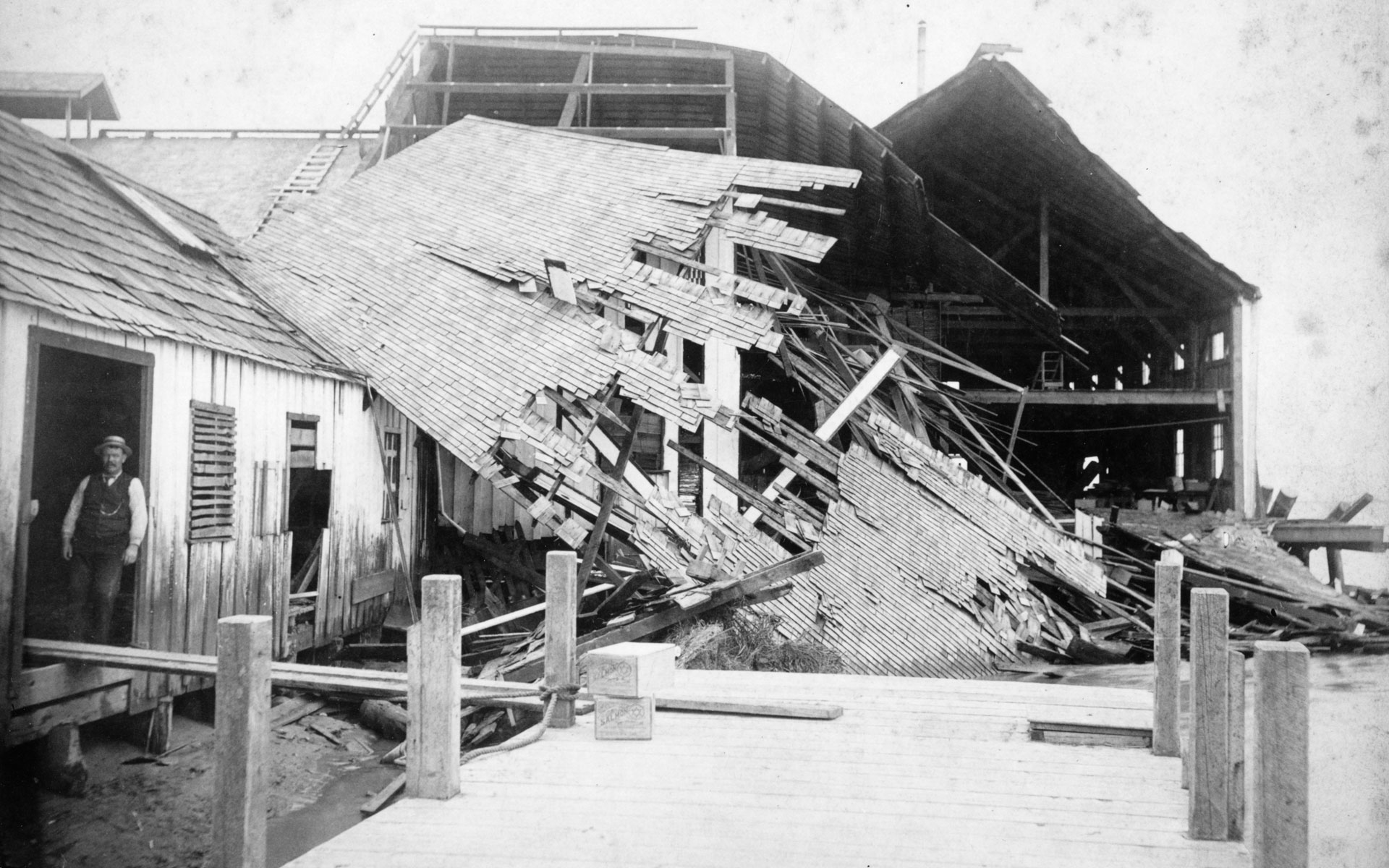The Deas Island Cannery was established in 1873 by tinsmith John Sullivan Deas, and Alexander Loggie. At the time, Deas was not only an industry leader but the only African American working in the B.C. canning industry.
1873-1909
49°07’33.5″N 123°03’39.5″W
Because of its ideal location in the early years of the industry before Steveston canneries were established, the Deas Island Cannery was briefly the largest salmon producer on the Fraser River. For the 1872-73 season, its pack was twice as large as any other cannery.
Wary of the boom of canneries beginning to pop up along the Fraser River, Deas attempted to secure exclusive drift net rights adjacent to his plant. The request was denied by both Federal and Provincial governments.
Deas stayed in the industry for only one more year. In 1878, he sold the cannery to the BC Canning Co., which operated the site until its closure in 1909.
The can labels for the Deas Island Cannery were designed by Grafton Tyler Brown, the first black artist working in the Pacific Northwest.

Deas Island Cannery damaged after 1894 flood. Image 1985-191-004 courtesy of the Delta Museum and Archives.

Deas Island Cannery, c. 1892. Image D-05348 courtesy of the Royal BC Museum and Archives

